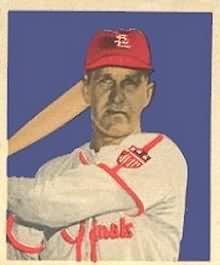
You'd expect that an artist who deliberately courted controversy might rouse a little debate on the event of his death. But none of his provocations move the daily art-crits in that direction—not his White Painting, not his "black painting," not his Automobile Tire Print, not his screenprints, not his Mud Muse, and not his "cardboards." Even the time that he asked Willem de Kooning for a drawing, erased its every line, and displayed it as Erased de Kooning Drawing wins worshipful treatment from the gang. "[A]n act both of destruction and devotion," reports the New York Times. Evidence of "creative overdrive," proclaims the Los Angeles Times. An example of "the younger generation, turning history into a blank slate," finds the Washington Post.We never had much truck with Rauschenberg’s art---we prefer pitchers like the one above, which is why we’re running it without credit or permission---but we were always intrigued by the fact that the artist was a pure product of what our friend Banjo calls the Petrochemical Underarm of Southeast Texas. From a 2005 profile in the Beaumont Enterprise, one of the art world’s most authoritative organs:
"We didn't have any museums when Milton was here. That's what we called him then," said Dovie (Horton) Logsdon, a classmate from Thomas Jefferson High School in Port Arthur. "But we all had to make the best of what we had. Everyone here was either farming or working with the railroad. We had to create our own culture."
Art was foreign to Rauschenberg when he was growing up in the working-class town."The first art I saw that was hung on the wall as art was in California during the Navy," said Rauschenberg.
What he saw at the Los Angeles County Museum was Gainsborough's "Blue Boy" and Lawrence's "Pinkie."
"They looked like the backs of playing cards I had seen. I remember being surprised that a human being actually made them. I thought, well, that's what I do. I doodle and draw and copy the funnies," Rauschenberg said.
To his surprise, his family had moved away, leaving no address.
"Someone told me they thought they might have moved to Lafayette," he said.
He hitched another 120 miles to a coffee shop there. There sat his father, Ernest, who explained simply, over a cup of coffee: He'd been promoted to Lafayette.

2 comments:
Rauschenberg can't hold a candle to Christo, who can get millions for artworks that never existed and never will exist. Getting people to pay for nonexistent works is the ultimate in modern conceptualism.n
I saw his work in the museum in PA when I was a kid (well in the library before they built the museum). It was inspiring to see his stuff and the various gold records they had from famous musicians and think, they all came from "the underarm" too. hehehe. RIP Milton. :)
Post a Comment